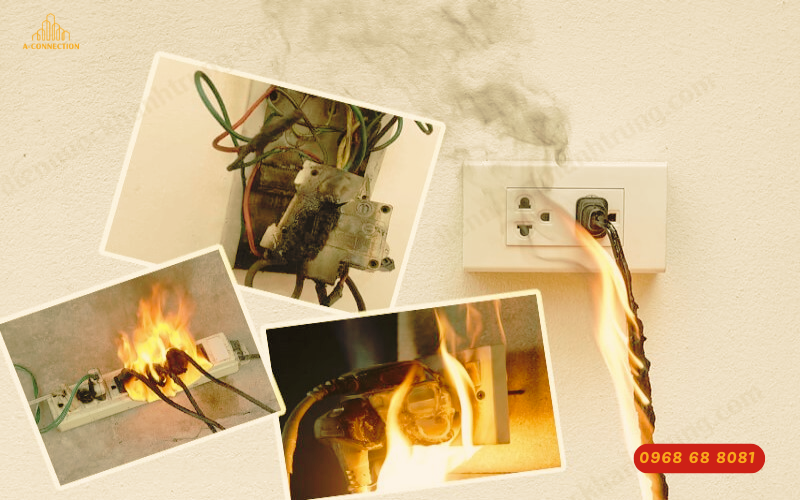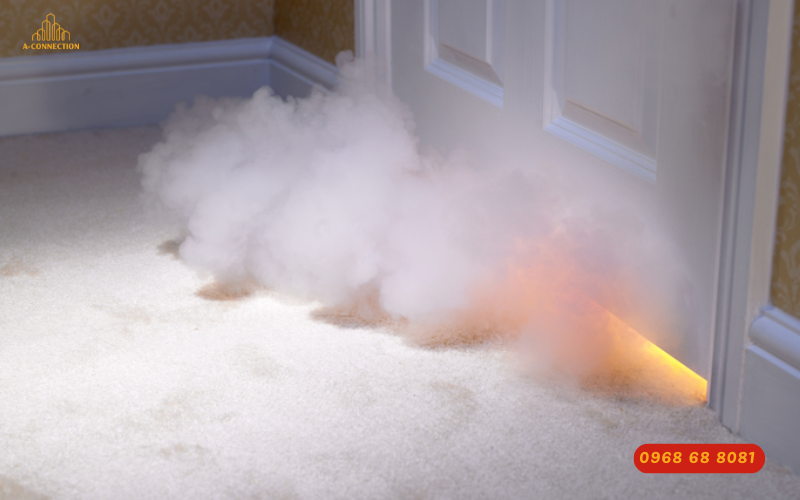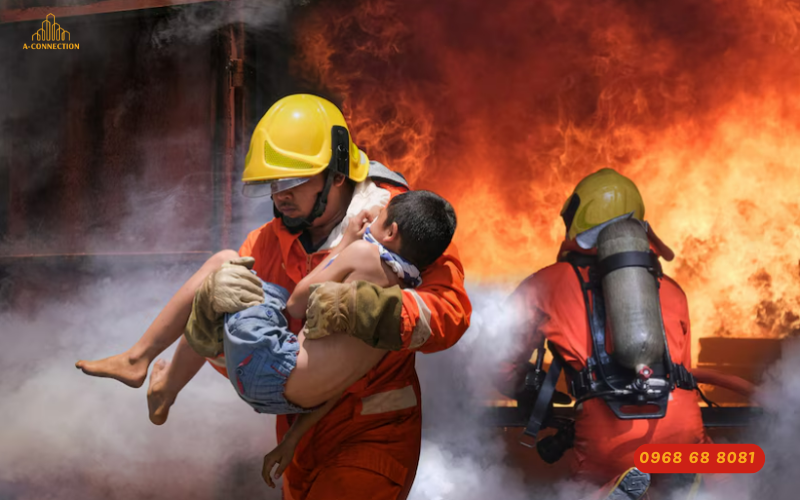Fires can occur anytime and anywhere. Therefore, mastering basic fire safety knowledge is crucial so that you can protect yourself and assist others in urgent situations. Let’s explore with A-connection the smartest and most effective fire prevention knowledge to help you stay calm and confident in every emergency.
I. Common Causes of Fire and Explosion
1. Unsafe Electricity Usage
– Electrical overloads or short circuits;
– Using poor-quality electrical devices;
– Lack of regular inspections and maintenance of electrical systems;
– Improper use of electrical equipment such as neglecting maintenance, using broken devices, or using them for the wrong purposes.
Always ensure electrical safety to avoid fire risks.
2. Unsafe Use of Gas and Stoves
– Gas leaks;
– Low-quality gas cylinders;
– Misusing gas stoves: not checking before use, using in enclosed spaces, lack of maintenance, not turning off gas properly, or using the wrong gas type.
3. Flammable Materials at Home
– Improper storage of gasoline, alcohol, chemicals;
– Materials like wood, fabric, paper, plastic, liquid fuel, and certain construction materials can easily catch fire when near a heat source.
4. Other Causes
– Smoking in non-designated areas;
– Malfunction of home appliances like air conditioning or refrigeration systems.
II. Basic Signs to Recognize a Fire
1. Smoke
In fire safety knowledge, smoke is often the first sign of a fire.
Always be alert to smoke—it’s an early sign of danger.
The color and smell of smoke can reveal much about the fire. Thick smoke with a burnt smell often signals a large fire. Observe the smoke’s color and density to assess the fire’s range and take timely preventive measures.
2. Sudden Increase in Temperature
If a room becomes abnormally hot, especially if surfaces like door handles, walls, or furniture feel unusually warm, a fire may be nearby.
3. Sounds
– Crackling noises or the sound of flames;
– Alarm system sounds.
4. Unusual Smells
– The burning smell of plastic, fabric, or wood;
– Gas leaks, etc.
III. Basic Fire Safety Knowledge You Should Know in Case of Fire
If a fire breaks out, applying the following fire safety knowledge can help protect yourself and find a safe escape route:
– Stay Calm and Assess the Situation: Remain calm to make the right decisions during an emergency.
– Cut Electricity and Call Emergency Services: Immediately turn off electricity and dial 114 to report the incident and request professional help.

The basic fire safety procedure always prioritizes saving lives first.
– Find the Escape Route: Follow exit signs or instructions to locate the safest way out.
– Move Safely: Crawl low to avoid smoke and heat, stay close to walls and windows if possible.
– Use Protective Items: Cover your face and body with wet clothes, blankets, or towels to avoid inhaling smoke.
– Escape Quickly: Leave through the nearest door or emergency exit as soon as possible.
– Signal for Rescue: Wave your hands, shout to attract attention from potential rescuers outside.

Signaling for rescue is a crucial emergency response.
– Never Jump from High Floors: Only jump if there’s guaranteed support and safety measures like safety nets or air cushions.
These basic fire safety procedures help protect yourself and reduce risk during fires.
In case of small fires, you can apply simple fire safety knowledge as follows:
– Sand: A cost-effective, easily accessible material. Sand absorbs heat and creates a barrier between the fire and oxygen.
– Wet Blankets or Sheets: Used to smother the flames and reduce heat.
– Salt Solution: Sprinkling salt over flames can form a layer that blocks oxygen.
V. Fire Prevention Measures
1. Inspect and Maintain Electrical Devices
– Regularly check and maintain devices to prevent short circuits, overheating, and other fire hazards.
2. Use Electricity Safely
– Avoid electrical overload, damaged wires, or overheating devices.
3. Use Gas Safely
– Frequently check for leaks;
– Use gas appliances properly by placing cylinders on flat, ventilated surfaces, opening and closing valves slowly, and avoiding use in enclosed spaces.
4. Manage Flammable Materials
– Store gasoline, chemicals safely;
– Keep flammable materials away from heat sources and separate them clearly.
5. Install Fire Detection and Suppression Systems
– Install automatic fire alarms to detect fires early;
– Equip fire extinguishers and fire-fighting tools, especially in high-risk areas like kitchens, garages, and storage rooms.
Learning and applying fire safety knowledge is not only important but essential for protecting people and property. Don’t let this knowledge stay theoretical—turn it into practical action. By being well-prepared and knowing how to respond in emergencies, while also setting up fire prevention measures, we can ensure safety for ourselves and others.
Also, always remember to save your local fire emergency hotline—it could save lives in critical moments.




